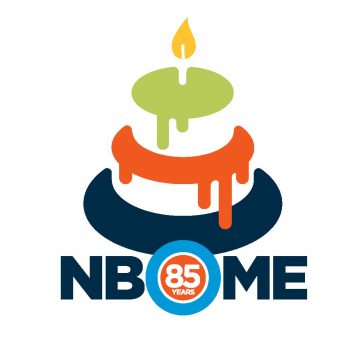Reflecting on Our History – the 1930’s
May 30, 2019
 This year, the NBOME celebrates the 85th anniversary of its founding. Not surprisingly, this will be a recurring topic in our various published articles and communications as we reflect on key elements in our rich history and commemorate this significant anniversary milestone.
This year, the NBOME celebrates the 85th anniversary of its founding. Not surprisingly, this will be a recurring topic in our various published articles and communications as we reflect on key elements in our rich history and commemorate this significant anniversary milestone.
But let’s start at the beginning — way back in 1934, when three forward thinking American Osteopathic Association (AOA) presidents came together with a keen understanding of the need for a profession, such as osteopathic medicine, to self-regulate and set its own standards.
Their collaboration of Arthur G. Hildreth, DO, Charles Hazzard, DO, and Asa Willard, DO, led to the creation of the National Board of Examiners for Osteopathic Physicians and Surgeons (the original name of the NBOME). The organization’s first president, Dr. Hazzard, was a graduate of Northwestern University and one of the first to graduate from the American School of Osteopathy (ASO), now A.T. Still University – Kirksville College of Osteopathic Medicine. He was also a member of the New York State Board of Medical Examiners and served as AOA President in 1903.
But first, let’s set the stage with some fun facts about the early 1930s, though it’s not a decade often connected with the word “fun”. 1933 marked the end of Prohibition, the Master’s Golf Tournament first teed off in 1934, and the Chicago Blackhawks won the Stanley Cup, also in 1934.
Sadly, this was also the era of the Great Depression, marked by downward economic spiral, stock market devaluation, bank failure, and extraordinary unemployment. From this era of depression, heightened regulation emerged, with President Franklin D. Roosevelt’s signing of the U.S. Securities and Exchange Commission in 1934 and the Social Security Act in 1935. This New Deal legislation represented a new role for government in American life, offering new protections and a safety net to millions of suffering people.
Medical education and regulation was in its early stages in the 1930s, where the impact of the Carnegie Foundation’s infamous Flexner Report of 1910 was having a major impact on the nation’s medical schools. The report called for enhanced standardization of basic science content instruction as well as more rigorous pre-matriculation requirements for those entering U.S. Medical Schools.
In the 1930s, each state granted physicians the license to practice using their own separate licensure exams, with many adopting laws requiring basic science examinations. And while osteopathic medical colleges expanded their curricula to meet these basic science requirements, AOA pioneers began to recognize the importance and also the responsibility of the profession to self-regulate and set its own standards. One of the critical elements, in their view, was to establish and maintain regulation and a strong professional identity, both for the good of the profession and the patients they serve.
As Dr. Hazzard explained, “The difficulties, inconvenience and expense” of having to take separate state board examinations with different requirements could be overcome by having one standardized osteopathic medical licensing exam designed with the highest standards possible.
By this time, in addition to use of hands-on diagnosis and osteopathic manipulative treatment (OMT), DOs were still criticized by some traditional physicians for their “body-mind-spirit” approach to caring for patients, and leaders of the profession recognized the role that distinctive assessment played in shaping the kind of physician envisioned by its profession’s founders.
“With independent regulation,” wrote Willard in 1932, “we will ultimately get every right for ourselves and those to come.” This indeed came to pass, as in 1937 only 26 states agreed to extend practice privileges to DOs commensurate to those granted to MDs — and none recognized NBOME’s exams!
Fast forward 68 years later to 2005, when Louisiana finally permits full and unrestricted practice rights to DOs, thus making them the last U.S. State to accept NBOME’s COMLEX-USA for physician licensure.
I believe the NBOME Founders would be very proud of what they started, and recognize the many longstanding contributions made by the NBOME Board, the National Faculty, and our amazing staff. They would be pleased with the positive impact NBOME assessments have on teaching, learning, and professional identity, as well as its importance to the quality of care when patients interact with what is now over 150,000 DOs and osteopathic medical students.
Stay tuned for more “history lessons” in the coming weeks and months as we continue our celebration of our momentous 85 years!
Contributed by John R. Gimpel, DO, MEd | President and CEO | NBOME

 This year, the NBOME celebrates the 85th anniversary of its founding. Not surprisingly, this will be a recurring topic in our various published articles and communications as we reflect on key elements in our rich history and commemorate this significant anniversary milestone.
This year, the NBOME celebrates the 85th anniversary of its founding. Not surprisingly, this will be a recurring topic in our various published articles and communications as we reflect on key elements in our rich history and commemorate this significant anniversary milestone.